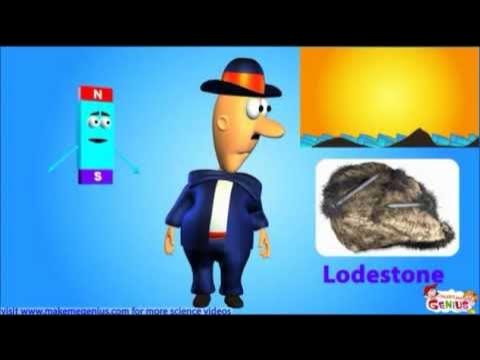Professor Eric Laithwaite: Magnetic River 1975
Summary
TLDRThe video explores the fascinating properties of magnets, contrasting permanent magnets with electromagnets, and the potential of magnetic levitation. It demonstrates various magnetic setups, such as floating magnets, electromagnets with iron cores, and alternating current-driven electromagnets. The video delves into the concept of a magnetic river, showcasing how electromagnets and alternating currents can propel objects like aluminum sheets. With visual demonstrations of floating and moving objects, the script discusses the challenges of stability in magnetic levitation and the development of a linear motor, hinting at the future of magnetic transport and propulsion technologies.
Takeaways
- 😀 Permanent magnets have both attraction and repulsion properties, with the ability to attract and repel when reversed.
- 😀 Magnets can be unstable when levitating, and stability is a key challenge in using magnetic levitation for transportation.
- 😀 Ring magnets with different magnetic poles can lift objects, but additional structures are needed to maintain stability.
- 😀 Magnetic levitation for trains is an intriguing idea, but practical concerns like stability, clearance, and cost must be addressed.
- 😀 Electromagnets are created by passing electric current through a coil of wire, which magnetizes a metal core.
- 😀 An electromagnet can attract or repel depending on the direction of the current, and the strength increases when using an iron core.
- 😀 Alternating current (AC) creates a dynamic effect that can be used to manipulate objects like aluminum rings.
- 😀 A linear motor creates a traveling magnetic field that can propel objects, demonstrating the potential for a 'magnetic river.'
- 😀 A copper cylinder placed alongside a traveling magnetic field begins to spin, illustrating the effect of a traveling magnetic field.
- 😀 By arranging coils to produce inward traveling magnetic fields, it is possible to lift and stabilize objects, offering insights for propulsion systems.
- 😀 Dividing coils into smaller groups allows for the creation of lift, propulsion, and guidance simultaneously, paving the way for magnetic transportation systems.
Q & A
What is the primary challenge when working with permanent magnets?
-The primary challenge is that permanent magnets are not fully understood, especially regarding their repulsive force and how to stabilize it for practical applications like levitation.
Why does the bar magnet demonstration not lead to stable levitation?
-The bar magnet demonstration shows repulsion, but it doesn't result in stable levitation because while repulsion occurs, the magnet doesn't stay in place without further stabilizing mechanisms.
What is the concept of repulsion in magnets, and how does it affect the potential for levitation?
-Repulsion occurs when two like poles of magnets push away from each other, which can create the impression of levitation. However, without stability, such as the repulsive force being strong enough to counteract gravity, it’s not feasible for levitation.
How does the use of ring magnets attempt to address the issue of levitation?
-Ring magnets, with their north and south poles, can create lift when positioned over one another. However, the instability of the setup without additional components like a glass tube limits their practical use.
Why would it be expensive to implement magnetic levitation in transportation systems like railways?
-Implementing magnetic levitation for railway carriages would be costly because it would require vast amounts of magnets on the track and on the vehicle itself, as well as a mechanism to stabilize and control the levitation, leading to high infrastructure costs.
How does the electromagnet demonstration differ from permanent magnets?
-An electromagnet is created by passing electric current through a coil of wire, which magnetizes an iron core, allowing for stronger magnetic forces compared to a permanent magnet. Electromagnets can be turned on and off, providing more control over their magnetic properties.
What happens when alternating current (AC) is used in an electromagnet?
-When alternating current is used, the current changes direction rapidly (50 times a second), which results in a varying magnetic field that can cause effects such as the throwing of non-magnetic materials like aluminum into the air, a demonstration of the traveling magnetic field.
What is a linear motor, and how does it relate to the concept of magnetic levitation?
-A linear motor uses a traveling magnetic field to move objects along a track. In this context, it demonstrates the potential to propel and lift objects, similar to the way magnetic levitation could work, by applying alternating current to coils that generate a traveling field.
Why is stability important in a system designed for magnetic levitation or propulsion?
-Stability is crucial because without it, objects levitating or being propelled using magnetic forces will be prone to falling off or drifting uncontrollably, which would make the system impractical for real-world applications such as transportation.
How does the concept of inward traveling magnetic fields contribute to stability and control?
-Inward traveling magnetic fields help stabilize the levitating object by focusing the magnetic force inward, preventing it from floating away or being unstable. This concept could potentially lead to more controlled and stable magnetic levitation systems.
Outlines

This section is available to paid users only. Please upgrade to access this part.
Upgrade NowMindmap

This section is available to paid users only. Please upgrade to access this part.
Upgrade NowKeywords

This section is available to paid users only. Please upgrade to access this part.
Upgrade NowHighlights

This section is available to paid users only. Please upgrade to access this part.
Upgrade NowTranscripts

This section is available to paid users only. Please upgrade to access this part.
Upgrade Now5.0 / 5 (0 votes)





